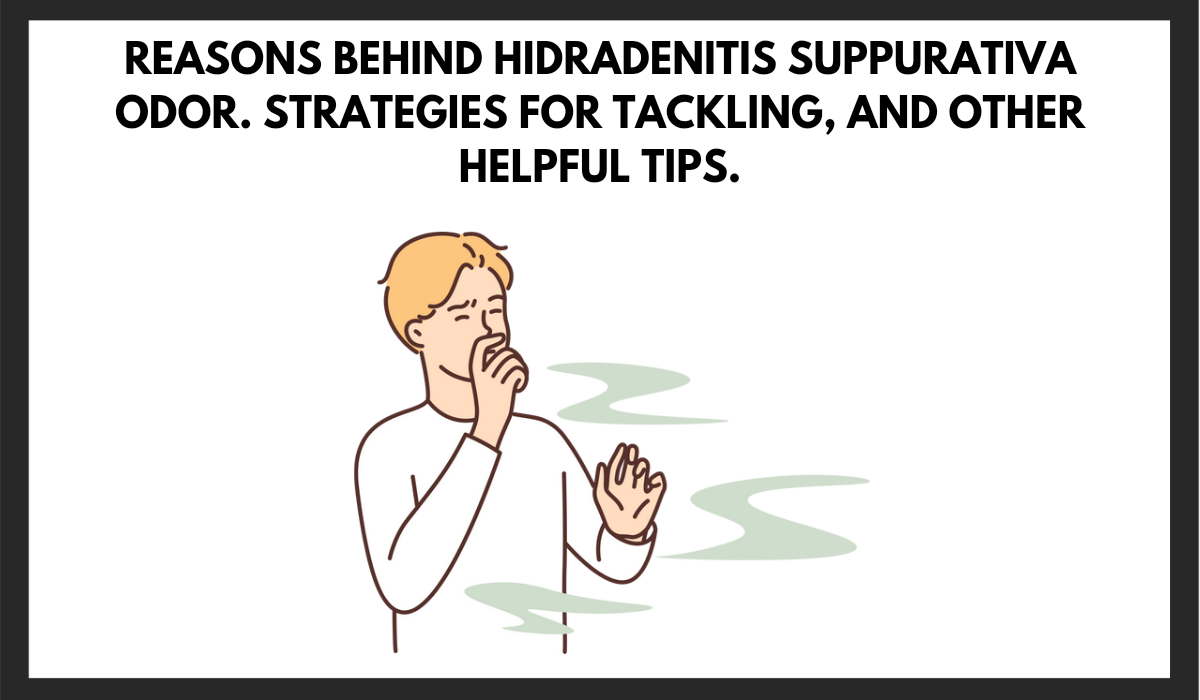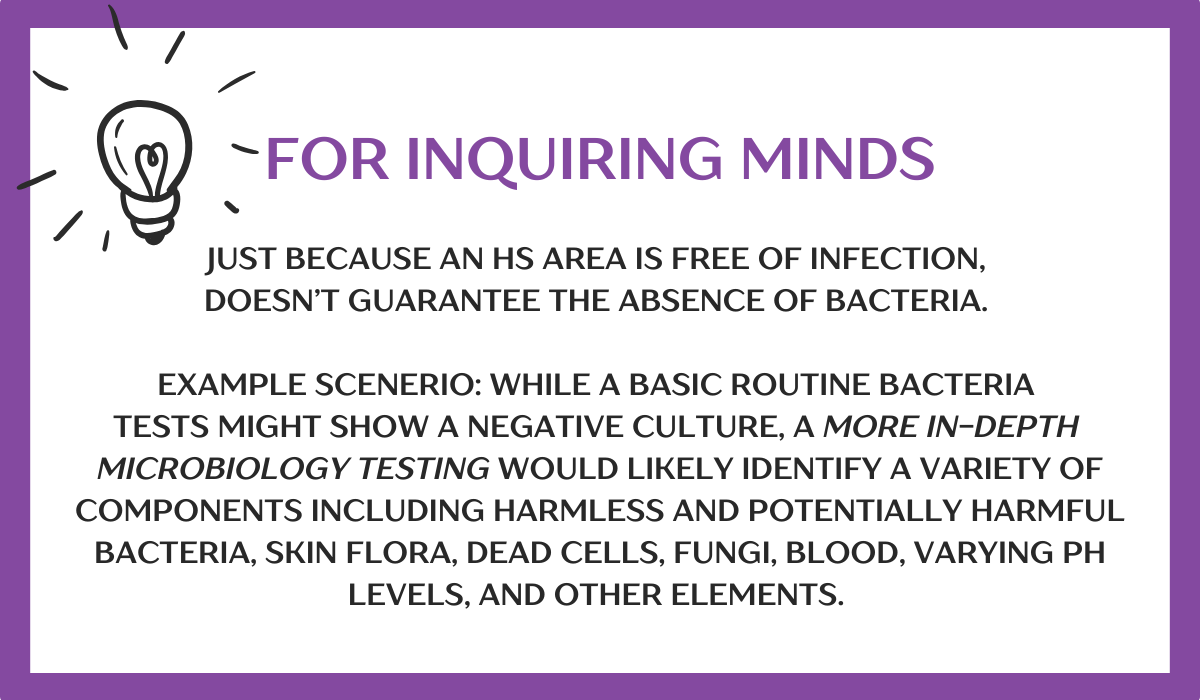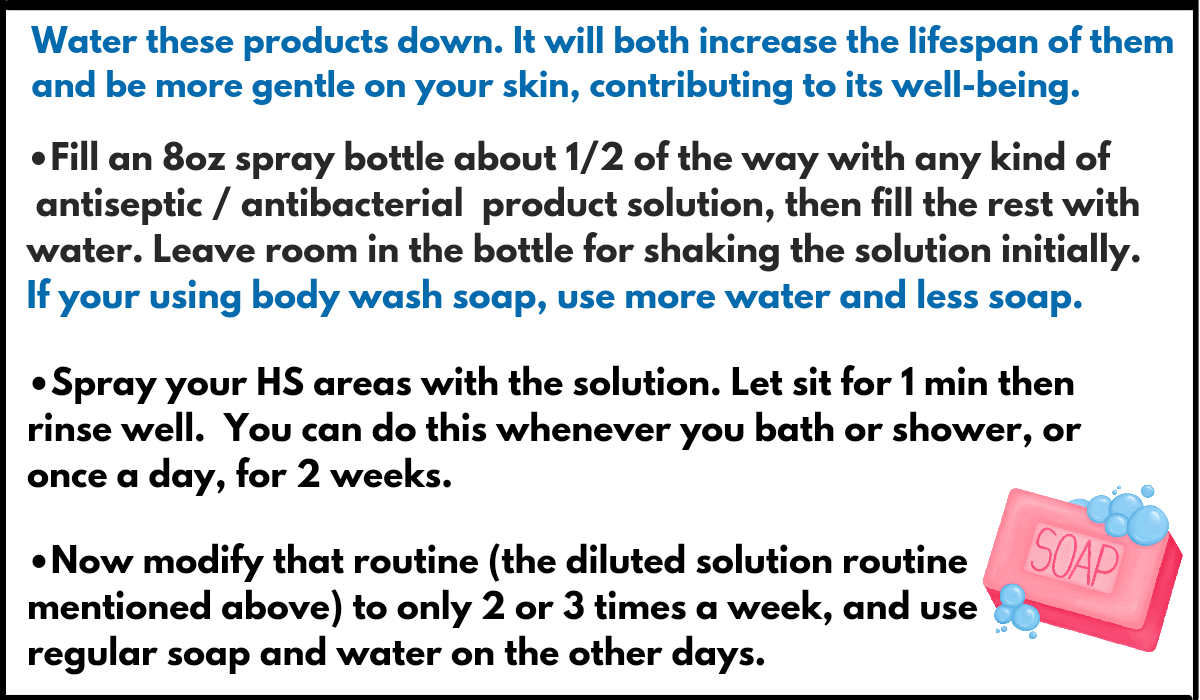Reasons behind Hidradenitis Suppurativa odor and smells. Strategies for tackling, and other helpful tips

HS is known for its noticeable odor and smells. In this article, I’ll break down different explanations for it and suggest strategies to address it.
You’re not to blame, and you’re not the only one going through this. A common symptom of HS is an odor associated with the abscesses or affected HS areas. Even if cultures show no evidence of infection. There are also those with HS who experience minimal to no odor.
What causes the smell? Below are a few explanations.
Inflammation. A smell may come from an inflamed HS wound, abscess, or any other HS area. Bacteria thrive in inflamed wound type environments, multiplying and releasing smelly substances, causing the wound to have a noticeable odor.
Bacteria, and a diverse community of microorganisms.
Breakdown of sweat and dead skin tissue.
When an abscess or affected HS area contains pus. Pus is a combination of dead white blood cells, bacteria, tissue debris, serum, and living or dead microorganisms.
Scar tissue and tunnels, common in stage 2 or 3 HS, can trap pus, leading to prolonged accumulation and potential odor.
These situations can produce compounds that lead to unpleasant smells.

What does it "smell" like?
People can experience different odors associated with HS. It’s often described as putrid, pungent, rancid, rotten, musky, like bread (yeast-like), like poo, metallic (rust-like), and so on. The presence of these smells does not indicate an infection.
Tips To Tackle These Smells:
Simply rinsing with water. Or use a fragrance-free, gentle soap that’s kind to your skin. How to: Just give your HS areas of concern an extra swishy wash (any time of the day), once or twice a day.
Witch Hazel: Buy in a bottle or you can buy the pre-made witch hazel wipes. How to: You can use this with a tissue/napkin, cotton ball, and gently wipe the area in need. Same instructions for the witch hazel wipes.. Alternatively, you can fill a 2-4oz spray bottle and spray the affected area (s), 1-2 times daily.
Wet Wipes: They’re sold individually wrapped and offer a variety of scents; it’s better to choose fragrances like aloe, chamomile, or natural scents. And avoid the antibacterial ones, which can harm beneficial bacteria. How To: Remove one and gently wipe the affected area, 1 to 3 times daily.
Hypochlorous Acid Type Spray -hypochlorous acid is stabilized sodium chloride water, in a SAFE proof container. You can purchase anywhere online or in stores. Works well for smell. Think of it as a very gentle bleach bath or a gentle dip in the pool. There are MANY brands. My tip: make sure the product has an expiration date. This type of product should have a shelf life of ten months to 1 yr under normal room temperature conditions. Storing in cool places can extend the shelf life / expiration date. How to: Spray or dab a little on your HS troubled area (s), 1 to 2 times a day. You can use more if you sweat a lot or live an active lifestyle. It is recommended that you do not exceed more than 3 times a day per area.
Create your own homemade spritz for HS areas
White vinegar Spritz: Take a 2 oz glass spray bottle and fill with water (almost to top). Add about 5 drops (less than a teaspoon) of white vinegar. Shake. Give those areas a spray, 1 or 2 times a day. Don’t overdo the vinegar; it can cause irritation. A little goes a long way. Double your batch if you want a larger bottle.
Apple Cider Vinegar Spritz: Take a 2 oz glass spray bottle and put a teaspoon of apple cider vinegar in, and fill the remainder of the bottle with water. Shake. Spray desired area, 1 or 2 times a day. Don’t overdo the vinegar; it can cause irritation. A little goes a long way. Double your batch if you want a larger bottle.
Witch Hazel Lemon Spritz: Take a 2 oz glass spray bottle, fill ¼ way with water, add 10 drops of lemon essential oil and fill the remainder of the bottle with witch hazel. Spray-spray, 1 or 2 times a day. Don’t overdo the vinegar; it can cause irritation. A little goes a long way. Double your batch if you want a larger bottle.
If you experience irritation or worsening HS due to any of these tip methods, stop using immediately.
The tip methods mentioned above can serve as multipurpose. They can clean around your wound area when things get messy, help clean stained clothing, sheets, or a chair. Anything we're able to soil. And they are handy for your HS Need-Now-Bag.

Drainage from HS areas
HS commonly causes persistent seepage and drainage. Pus and / or drainage can be a variety of colors, including green, white, yellow, brown, purple, or even blood. The texture can vary, ranging from slimy to chunky, sometimes even with blood clots, chalky bits, or a mixture. As mentioned above, pus and / or drainage is a combination of dead white blood cells, bacteria, tissue debris, serum, and living or dead microorganisms. Just like odor, the color and texture of something doesn’t necessarily mean it’s infected.
Try not to mask the smell. For example, by using deodorant or powder. These things can sometimes make matters worse.
While on topic. Should you wear deodorant with HS? That question can be tricky. The best way to put it is, if you don’t have to, don’t. Or find alternative deodorant ways.
If you must have deodorant, take your time choosing it. Make sure to give the labels and ingredients a good read. Look for simple, clean, and natural as possible. Aluminum free. Preferably fragrance free.
What about powders and HS?
Powder is not suitable for all stages or types of HS. Stage 1 or 2 HS without wetness or oozing shouldn’t cause any problems. However, you should only consider it if you specifically need it for chafing or minor moisture absorption.
Using powder is not recommended for areas of HS that are oozing, wet, or moist. This can result in a thick, skin irritating paste that could aggravate or cause more problems. Rashes are even a possible outcome of this.
If you’re thinking about powder. I recommend a gentle powder, one with zinc in it, like Gold Bond, Monkey Butt. Or a natural option with simple ingredients. Use with caution with oozing, wet, or moist areas.
Additionally, be cautious when using cornstarch, as it contains glucose and this can lead to yeast rashes. In addition, if an abscess potentially containing an infection may be aggravated by glucose.
If you experience irritation or worsening HS due to deodorant or powders, stop using them immediately.
Keeping HS areas clean (even with plain water), minimizing antibacterial/antibiotic soaps, and using probiotics (if appropriate) may help reduce odors associated with HS. This can sometimes be enough to control odor.
Using antibacterial products with Hidradenitis Suppurativa
It’s impossible to fully eradicate the bacteria and organisms that live on and inside us, nor do we want to.
When used excessively, antibacterial products are not good for HS or overall skin health. HS is not an infectious disease and not all abscesses have harmful bacteria or are infected, as previously stated. A diverse community of bacteria, viruses, and fungi reside on our skin. “Good” bacteria play a vital role. Keeping the skin microbiota, which lives on our skin, beneath it, and in hair follicles, balanced is crucial.
Antibacterial, antiseptics type products aren’t always needed for HS. Overuse of products like acne cleansers, soaps, antiseptics, and antibiotic creams, especially those with triclosan, cannot discriminate between beneficial and harmful bacteria. They can kill both good and bad bacteria.
It’s widely understood that skin health is a major contributor to overall health. A healthy microbiome protects the skin from infection by controlling harmful organisms and fighting off external and environmental dangers. In addition, it helps control inflammation, speeds up wound recovery, and creates a protective barrier against certain allergens and environmental toxins.
Bear this in mind when using these products, how often you use them, and if your HS hasn’t improved or has gotten worse.
If you’re interested in controlling HS with antibacterial products, be moderate in your use and explore natural alternatives before resorting to strong, over-the-counter products. You could also opt for plain unscented soap, which is good for sensitive skin.
Using Hibiclens, other antiseptics and antibacterial products can be beneficial for HS patients struggling with excessive chronic bacteria.
Here are some tips to utilize antiseptic or antibacterial products, including HIBICLENS, for washing.
How To:

Once you’re ready, gradually reduce your use of the antibacterial/antiseptic product and see what happens when you wash without it. You can always bring a little back in if needed. Experiment but be patient and allow your body time to adapt.
Despite the struggle and stress being VERY real, managing the odor associated with Hidradenitis Suppurativa is possible. Even if complete elimination isn’t achievable, it’s still a step in the right direction. If these methods aren’t a good fit, keep exploring until you find what works best. There’s something out there for you!
If you think you might have an infection, or aren’t sure, please see the attached related article on “Cellulitis or Hidradenitis Suppurativa Inflammation. Ways to learn the difference.
Special Note: Written by Denise Fixsen. This information is backed by my 46 years of living with Hidradenitis Suppurativa, 10 years of dealing with multiple chronic illnesses, 36 years of advocacy, and continuous education. And to ensure accuracy, reliability, and trustworthiness, I incorporate peer-reviewed studies and other high-quality sources into my articles and material. I also wanted to inform you that I’ve chosen to end my collaboration with editors on my articles. Although there may be grammar errors due to brain illnesses (mostly), with this said, my content remains reliable, factual, and solid.
Medical Disclaimer: This content is solely for information, education, and support. The purpose is not to serve as a replacement for professional medical advice, diagnosis, or treatments. FDA Disclaimer: any materials mentioning treatments, procedures, supplements, etc., have not been evaluated by the FDA and are not intended for diagnosing, treating, curing, or preventing any disease or health condition.
Sources: PMCID: PMC9850199, PMID: 33205398, PMC7450471, PMID: 32884675, PMID: 30130782, doi:10.1001/jamadermatol.2017.0904, www.ncbi.nlm.nih.gov/books/NBK534867/, doi.org/10.1007/s40271-021-00539-7, https://www.mskcc.org/, doi.org/10.1007/s00403-023-02576-8, doi: 10.3201/eid1110.041276, PMCID: PMC6101359, Environmental Science & TechnologyVol 45/Issue 7, doi:10.1177/15347346211015656, doi:10.1016/j.joms.2020.06.029, PMCID: PMC6922465, wwwnc.cdc.gov/eid/article/7/7/01-7705_article
Article posted on 09-17-2024
